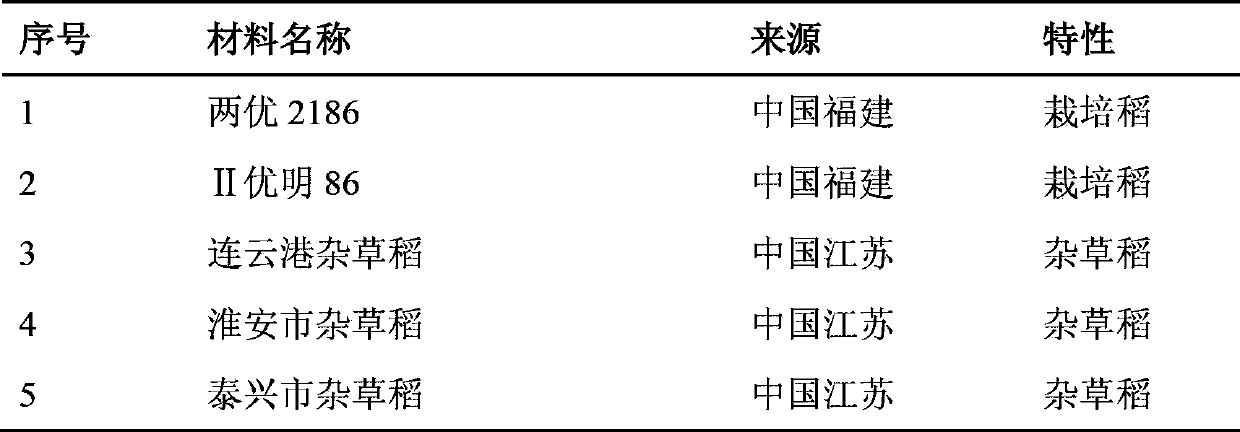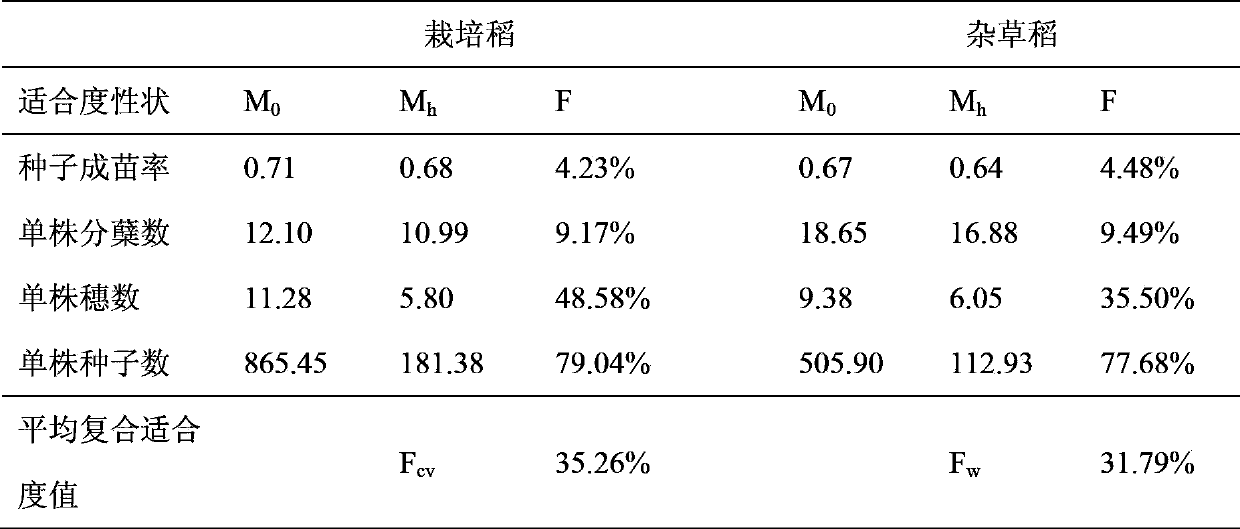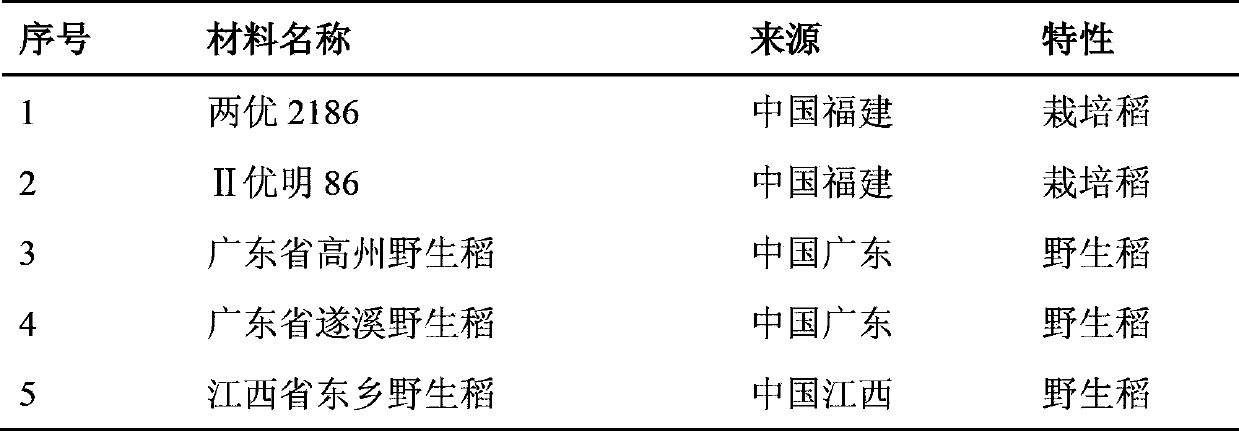Gene escape detection method
A detection method and gene technology, applied in horticultural methods, botanical equipment and methods, horticulture, etc., can solve the problems of weeds, wild relatives, environmental risks, cost a lot of manpower, material resources and financial resources, etc., to achieve beneficial Environmental safety evaluation, reliable test results, and good application prospects
- Summary
- Abstract
- Description
- Claims
- Application Information
AI Technical Summary
Problems solved by technology
Method used
Image
Examples
Embodiment 1
[0035] The method of the invention is used to detect and analyze the environmental risk of the Bt gene in the insect-resistant transgenic cultivated rice escaping to the weedy rice population. The experimental materials are shown in Table 1.
[0036] Table 1.
[0037]
[0038] (1) Construct the experimental groups of cultivated rice and weedy rice for environmental biosafety testing through the following steps:
[0039] Mix the same amount of seeds of 2 different varieties of cultivated rice (as shown in Table 1) to form the experimental population of cultivated rice, and mix the equal amount of seeds of 3 different weedy rice populations (as shown in Table 1) to form the experimental population of weedy rice ;
[0040] (2) Field planting experiments designed to simulate the environmental risks caused by the escape of insect-resistant transgenes:
[0041] Select the main target pests of the insect-resistant transgene (Bt): the wild population of Chilo suppressalis, after s...
Embodiment 2
[0056] Using the method of the present invention to detect the environmental risk of the weedy rice population in Jiangsu where the Bt gene of the insect-resistant transgenic cultivated rice has escaped
PUM
 Login to View More
Login to View More Abstract
Description
Claims
Application Information
 Login to View More
Login to View More - R&D
- Intellectual Property
- Life Sciences
- Materials
- Tech Scout
- Unparalleled Data Quality
- Higher Quality Content
- 60% Fewer Hallucinations
Browse by: Latest US Patents, China's latest patents, Technical Efficacy Thesaurus, Application Domain, Technology Topic, Popular Technical Reports.
© 2025 PatSnap. All rights reserved.Legal|Privacy policy|Modern Slavery Act Transparency Statement|Sitemap|About US| Contact US: help@patsnap.com



